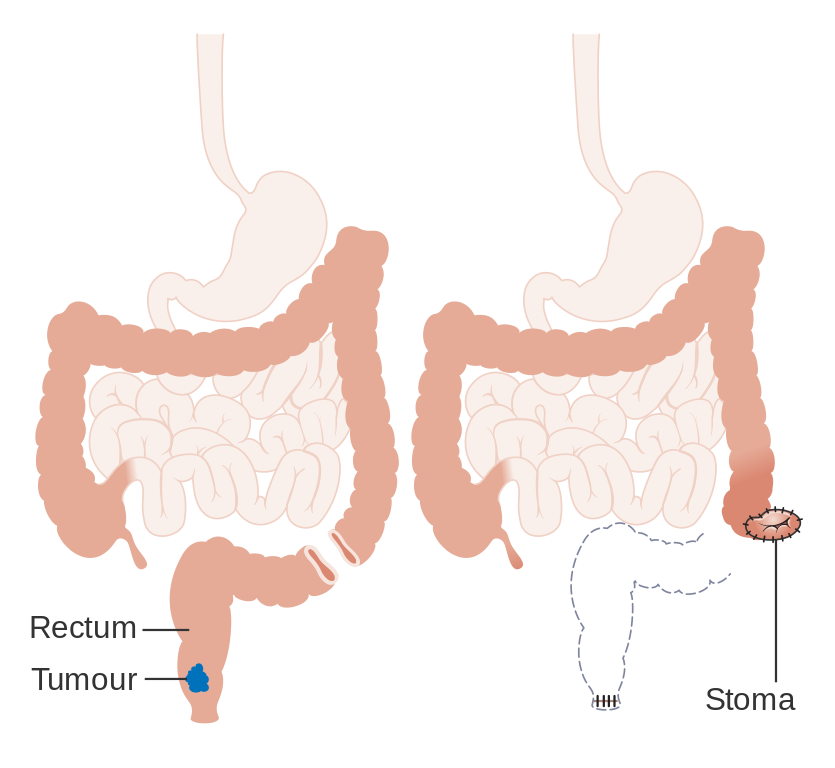Abdominoperineal Resection

Abdominoperineal resection (APR) is a surgical procedure primarily used to treat rectal cancer, especially when the tumor is located very low in the rectum and cannot be removed without affecting the sphincter muscles. The procedure involves removing the rectum, anus, and surrounding tissues, followed by the creation of a permanent colostomy. The surgery can be performed using different techniques: open surgery, laparoscopic surgery, and robotic-assisted surgery. Abdominoperineal resections doctors in Ahmedabad are skilled in determining the best approach for each patient, ensuring optimal outcomes.
Surgical Approaches
1. Open Abdominoperineal Resection
The traditional method involves a large incision in the abdomen and perineum. The best surgeon for abdominoperineal resection ensures direct access to the rectum and surrounding tissues for effective removal.
Procedure:
- The abdominal incision allows the surgeon to mobilize the colon and rectum.
- The rectum and anus are removed through a perineal incision during the abdominoperineal resection.
- A permanent colostomy is created by bringing the end of the colon through the abdominal wall.
Advantages:
- Direct visualization of the surgical field.
- May be preferred in complex cases with extensive disease, making it ideal for patients treated by abdominoperineal resections doctors in Ahmedabad.
Disadvantages:
- Longer recovery time due to the large incision.
- Higher risk of infection and complications.
- More postoperative pain and longer hospital stay.
2. Laparoscopic Abdominoperineal Resection
Minimally invasive surgery using small incisions and specialized instruments. A camera is inserted through one of the incisions to provide a view of the surgical area.
Procedure:
- Several small incisions are made in the abdomen for the abdominoperineal resection.
- The laparoscope provides a magnified view, and instruments are inserted through other incisions.
- The rectum and anus are dissected and removed through a perineal incision, similar to the open approach.
- A permanent colostomy is created.
Advantages:
- Smaller incisions result in less postoperative pain, which is beneficial for patients treated by the best surgeon for abdominoperineal resection.
- Shorter hospital stay and faster recovery.
- Lower risk of infection compared to open surgery.
Disadvantages:
- Requires specialized training and experience, which abdominoperineal resections doctors in Ahmedabad are well-equipped to provide.
- Longer operative time.
- May not be suitable for all patients, especially those with large tumors or significant adhesions.
3. Robotic-Assisted Abdominoperineal Resection
An advanced form of minimally invasive surgery using robotic technology to enhance precision and control.
Procedure:
- The robotic system consists of multiple arms that hold instruments and a camera, used during the abdominoperineal resection.
- The surgeon controls the robotic arms from a console, providing high-definition, 3D visualization.
- The rectum and anus are dissected with greater precision and removed through a perineal incision.
- A permanent colostomy is created.
Advantages:
- Enhanced precision and dexterity, especially in tight pelvic spaces, making it suitable for patients treated by the best surgeon for abdominoperineal resection.
- Better visualization with 3D imaging.
- Reduced blood loss and lower conversion rates to open surgery.
- Faster recovery and less postoperative pain.
Disadvantages:
- High cost and limited availability of robotic systems.
- Requires extensive training and experience.
- Longer operative time in some cases.
Postoperative Care
- Pain management is crucial, with options ranging from oral analgesics to epidural anesthesia.
- Early mobilization and physical therapy to promote recovery.
- Monitoring for complications such as infection, bleeding, or hernia formation after the abdominoperineal resection.
- Education on colostomy care and support from a stoma nurse.
Complications and Risks
- Potential complications include infection, bleeding, deep vein thrombosis, and complications related to the colostomy.
- Long-term risks include hernia, sexual dysfunction, and bowel obstruction, which may be minimized by the best surgeon for abdominoperineal resection.
Conclusion
The choice of surgical approach for abdominoperineal resection depends on various factors, including the surgeon's expertise, the patient's anatomy and health, and the tumor's characteristics. Each technique offers its own set of advantages and disadvantages, and the decision should be made collaboratively between the patient and the abdominoperineal resections doctors in Ahmedabad.